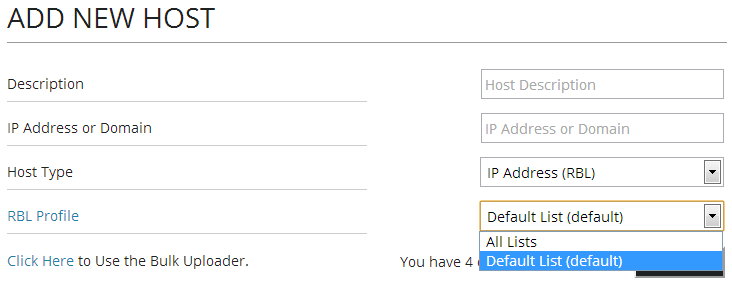The RBLTracker service was upgraded to version 1.12 today, which includes the following new features:
Custom Check Frequency
Customers subscribed to the Ultimate package can now adjust the frequency of their host checks, using a simple drop-down list from the Profile -> Settings section:
At the moment, customers can select from a 6 hour window, to a 48 hour window. Finer grained controls will likely be added in future releases.
API Updates
We’ve made some very basic changes to the API service:
- Replaced all instances of the term “blocked” with “listed”. The “blocked” terminology is still available, but customers should migrate to the new terminology as soon as possible, as it will be deprecated in future releases.
- The matched RBLs have been added to the response data. This includes the RBL matched, the RBL website, and the RBL output from DNS.
- The API version number is now included in the response object.
An updated API document is available from the API Access section of the RBLTracker portal.
Twitter Notifications
Customers can now add their Twitter screen name to their account as notification contacts. RBLTracker will send a direct message to your Twitter account anytime a host matches (or based on your scheduling settings:
Customers must follow the @rbltracker Twitter account with the same Twitter handle in order to received direct messages. We also cannot send URLs in direct messages, due to limitations on the Twitter platform- hopefully this is something they will correct in the future.
If you have any questions or comments about any of these new features, please let us know @ info@rbltracker.com






